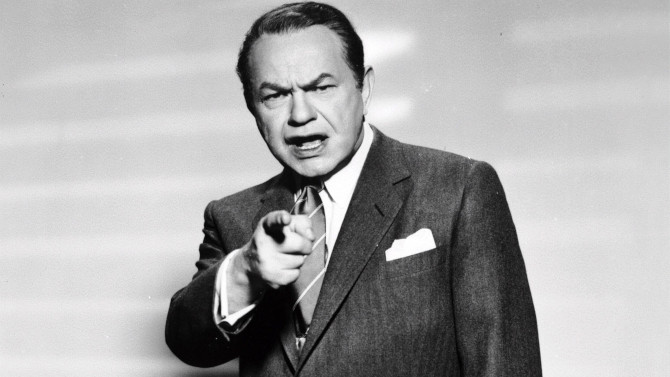
A Law Unto Themselves
The front door to an apartment swings open... an unseen figure walks through the living area and approaches a beautiful blonde woman wearing a robe as she walks around the bathroom... he then deliberately empties the barrel of his revolver into her – this is the jarring cold opening to the film noir Illegal (1955), and one thing is for sure, it knows how to grab your attention. Funnily enough, this was the third adaptation of the 1929 play “The Mouthpiece” by Frank J. Collins, following Mouthpiece (1932) and The Man Who Talked Too Much (1940) – and they say movies are remade too much today. Flash to Victor Scott (Edward G. Robinson), a district attorney who is wise to all the angles and is graced with a silver tongue. With an unyielding desire to win (he got it from growing up and fighting his way out of the slums), he argues every case like it is his last.
-

Film Noir, De Palma Style
Femme FataleMay 11, 2014In 2002, writer/director Brian De Palma once again put pen to paper and created another one of his unique homages to classic cinema (the first in ten years). Titled Femme Fatale, the director lets us follow his own take on the legendary film noir bad girls of old.
-

Rififi a Classic Crime Film
RififiApril 6, 2014Most scripts and movies are formed in one complete package, focusing on continuity, flow and character development as well as a definite beginning, middle and end. Yet some films are formed out of something different – a single shot, concept or idea that one then develops a picture around. It does not always work, but when it does, it is cinematic gold. This is the case for the 1955 French crime caper Rififi (originally titled Du Rififi Chez Les Hommes).
-

Russell Does the Hustle, American Style
American HustleMarch 23, 2014"Some of this actually happened." Released last week on Blu-Ray and DVD, David O. Russell’s 2013 hit American Hustle (which was nominated for 10 Academy Awards) out Scorsese’d Scorsese, as many critics put it. I will not go that far, but Russell creates a lively crime comedy/drama in the vain of past Scorsese classics such as Goodfellas, Casino and others – and it can compete on most levels.
-

This Scandinavian Entrée is Delicious
HeadhuntersJanuary 11, 2014One global region that has really gained traction and popularity in the film and television industry recently is Scandinavia. With the huge success of Stieg Larsson’s novels that became the highly popular Millenium film trilogy (Girl With the Dragon Tattoo), we have seen these northern European countries develop complex and entertaining stories that usually fall within the noirish crime genre. Television such as Forbrydelsen (The American TV show The Killing is based on this), Wallander, The Bridge, and Borgen (Stephen King’s favourite show of 2012) have not only found their niche in North America, but have also influenced the television and film industry in North America and Britain as well. One such movie that fits within this genre is Jo Nesbø’s Headhunters (the highest grossing Norwegian film of all-time).
-

The Attempt at the Perfect Heist
The KillingAugust 16, 2013We are now officially into the dog days of summer. Fall is in the air and it is time for my final film noir of the summer. Many movies have depicted the attempt at the perfect heist, but there are few that are as influential as the 1956 Stanley Kubrick motion picture The Killing. Kubrick, who is best known for later films such as The Shining, Full Metal Jacket and 2001: A Space Odyssey, both wrote the screenplay and directed this classic gem, with assistance from Jim Thompson – who helped write the dialogue (Thompson has become an iconic pulp crime fiction novelist [The Killer Inside Me] – gaining fame after his death in 1977).
-

On a Hot Summer’s Night
Double IndemnityJuly 15, 2013One of my favourite genres is the short-lived film noir category, which lasted through the 1940's and petered out towards the end of the 1950's. It grew from the German expressionism period of the 1920's and was compounded by the anxiety and cynicism that came out of World War II. Named by French critics who were describing the black-and-white Hollywood crime movies of the 40's, this is a unique genre that captures a much darker, cynical and more vicious world than most other films from this period.
